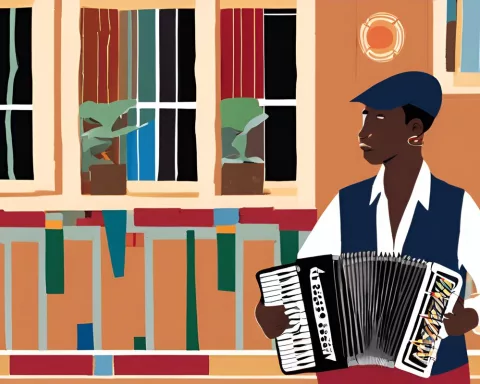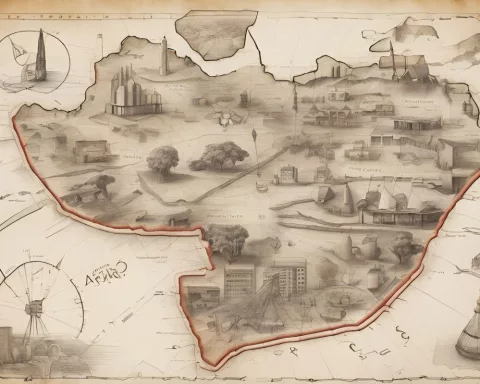The Chatsworth Magistrate Court is a stunning symbol of hope and justice, representing South Africa’s transition to a country built on constitutionalism, dignity, and the rule of law. The recently renovated and expanded court cost nearly R203 million and incorporates eco-friendly solutions, making it easily accessible for people living with disabilities. In addition to being a tribute to freedom fighters and a crucial pillar of democracy, the project created job opportunities and training prospects for the community and employed 27 local sub-contractors.
The Chatsworth Magistrate Court: A Symbol of Hope and Justice
The Chatsworth Magistrate Court is a beacon of hope and a symbol of justice, standing as a tribute to South Africa’s transition to a country founded on constitutionalism, dignity, and the rule of law. Its refurbishment and expansion, completed at nearly R203 million, exemplifies the government’s unwavering commitment to effective and efficient justice delivery. The project created much-needed job opportunities and training prospects, incorporated the EPWP programme, and employed 27 local sub-contractors. The court’s green design reduces the carbon footprint, and it is easily accessible to People Living With Disabilities.
The Chatsworth Magistrate Court, situated at the heart of Chatsworth community, embodies a shining beacon of hope and a striking monument to justice. Its grandeur and magnificence are a testament to the unwavering spirit of justice and a significant reminder of South Africa’s turbulent past. As an emblem of South Africa’s transition to a country founded on constitutionalism, dignity, and an unwavering commitment to the rule of law, it holds a unique place in the nation’s heart.
A Vivid Reflection of Chatsworth’s Compelling History
Chatsworth’s history is a tale of involuntary relocations and the harsh realities of apartheid, underlined by the Group Areas Act in the 1950s. Presently, the meticulously renovated Chatsworth Magistrate Court stands as a beacon of South Africa’s pledge to unity, non-racialism, equality, and prosperity.
The court’s official handover pays homage to the memory of the freedom delegates from the African National Congress, the South African Indian Congress, the South African Coloured People’s Congress, and the South African Congress of Democrats. With great bravery, these individuals adopted the Freedom Charter in 1955, which declared, “The courts shall be representative of all the people” and “All Shall Be Equal Before the Law!”
The handover also honours the memory of Nelson Mandela, the iconic figure who cast his inaugural vote in this province on 27 April 1994 and whose first presidential address echoed with the phrase, “Let there be justice for all!”
A Tribute to Freedom Fighters and Pillar of Democracy
Furthermore, the court serves as an homage to Lenny Naidu, an uMkhonto we Sizwe combatant and native of Chatsworth, who was slain at 24 along with other MK combatants. Thus, this court is indeed a critical pillar for our hard-earned freedom and democracy.
The court’s refurbishment and expansion, completed at nearly R203 million, exemplifies the government’s commitment to effective and efficient justice delivery. The project, which now houses seven courts, ten holding cells and additional administration facilities, was diligently designed with close attention to detail.
This conscientiously planned construction project takes into account the dignity of the profession and the people involved. It has resulted in a safe, clean, and welcoming environment, equipped with wheelchair ramps and lifts to ensure easy access for People Living With Disabilities. Furthermore, the building’s green design, providing ample natural light and incorporating eco-friendly solutions, reduces the carbon footprint.
Challenges and Lessons from the Construction Project
The project, however, faced challenges including construction delays due to court proceedings and lobbying groups demanding employment on the project. These experiences have imparted crucial lessons to the Department of Public Works and Infrastructure, which will aid in improving community facilitation and managing community expectations for future infrastructure projects.
Beyond its symbolic importance, the construction of the Chatsworth Magistrate Court has delivered tangible benefits to the community. The project created much-needed job opportunities and training prospects, incorporated the EPWP programme, and employed 27 local sub-contractors.
The Impact and Legacy of the Chatsworth Magistrate Court
The impact of the first democratic elections, held on 27 April 1994, marked a significant turning point in South Africa’s history. It signified the end of centuries of colonial and apartheid rule, giving birth to a new South Africa grounded in constitutional democracy, the rule of law, and human rights. This legacy is prominently embodied in the renovated Chatsworth Magistrate Court.
As we continue to invest in court infrastructure to reduce case backlogs and delays, and to ensure court processes are more efficient and accessible to all, we are reminded of the importance of preserving and maintaining these assets. It is our responsibility to strengthen the criminal justice system by developing modern judicial infrastructure and ensuring that no one is left behind in accessing justice and protecting their rights.
1. What is the Chatsworth Magistrate Court?
The Chatsworth Magistrate Court is a recently renovated and expanded court in South Africa that symbolizes the country’s transition to a nation built on constitutionalism, dignity, and the rule of law.
2. What was the cost of refurbishing and expanding the court?
The cost of refurbishing and expanding the Chatsworth Magistrate Court was nearly R203 million.
3. What benefits did the court’s construction project bring to the community?
The project created job opportunities and training prospects, incorporated the EPWP programme, and employed 27 local sub-contractors.
4. What challenges did the construction project face?
The project faced construction delays due to court proceedings and lobbying groups demanding employment on the project.
5. What lessons were learned from the construction project?
The experience of the construction project taught the Department of Public Works and Infrastructure crucial lessons in improving community facilitation and managing community expectations for future infrastructure projects.
6. What is the legacy of the Chatsworth Magistrate Court?
The Chatsworth Magistrate Court embodies the legacy of South Africa’s transition to a constitutional democracy, the rule of law, and human rights. It serves as a beacon of hope, an emblem of the country’s history, and a reminder of the importance of investing in modern judicial infrastructure to ensure access to justice for all.












